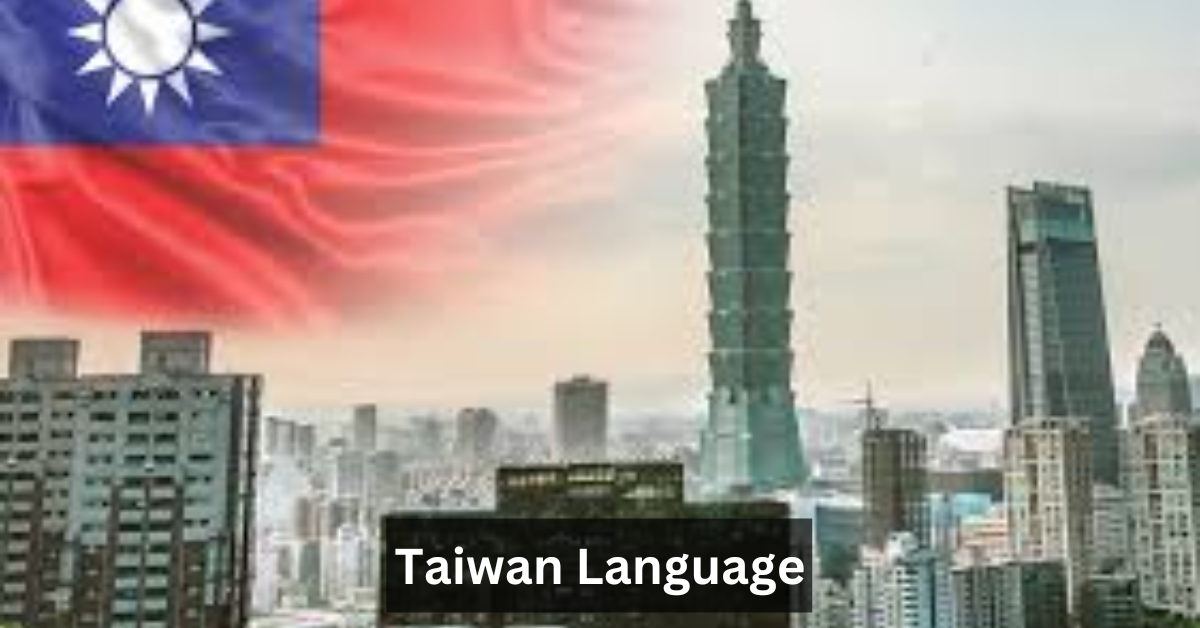The Taiwan Language landscape is one of the most linguistically diverse in East Asia. While many assume that Mandarin is the only language spoken in Taiwan, the truth is much richer and more textured. The island is home to an array of languages and dialects, from the widely used Mandarin Chinese (Guóyǔ) to the historically significant Taiwanese Hokkien, the culturally rooted Hakka language, and over a dozen Formosan indigenous languages that trace their roots to the Austronesian language family. This diversity doesn’t just reflect communication preferences—it embodies centuries of migration, colonization, identity politics, and cultural preservation.
Understanding the Taiwan Language dynamic is essential for anyone seeking deeper insights into Taiwan’s cultural, educational, and political identity. This article offers a comprehensive exploration of the main languages spoken in Taiwan, their historical and sociopolitical contexts, and the nation’s ongoing efforts to revitalize and protect its linguistic heritage. From language policy in Taiwan to the impact of Japanese colonial language influence, every aspect of Taiwan’s multilingual society reveals a powerful narrative of resilience and diversity.
The Official Taiwan Language: Mandarin Chinese (Guóyǔ)
Mandarin’s Rise to Dominance
The primary Taiwan Language used in education, government, and national media is Mandarin Chinese, officially known as Guóyǔ (國語). This status was established after the Republic of China government retreated to Taiwan in 1949, bringing with it a Mandarin-based curriculum and language standardization policies. Mandarin’s elevation was intended to unify the island linguistically, especially after decades of Japanese rule (1895–1945) where Japanese was the official language.
Mandarin in Taiwan uses Traditional Chinese characters, which contrast with the Simplified Chinese script used in mainland China. The continued use of traditional characters is a source of pride for many Taiwanese and is considered an important cultural and historical touchstone.
Comparison with Simplified Chinese and Regional Variants
Though Mandarin is spoken in both mainland China and Taiwan, differences in vocabulary, pronunciation, and even grammar distinguish Taiwanese Mandarin from its mainland counterpart. For instance, Taiwan tends to retain classical Chinese usages and places high importance on proper diction and tonal accuracy. In addition, the local Mandarin has incorporated phrases from Taiwanese Hokkien and other dialects, giving it a unique flavor that sets it apart from Standard Mandarin taught elsewhere.
Taiwanese Hokkien: The Soul of the Taiwan Language
Origins and Historical Roots
Taiwanese Hokkien, also known as Tâi-gí or Taiwanese Minnan, is arguably the most emotionally resonant Taiwan Language for the majority Hoklo population. Derived from the Minnan dialect spoken in southern China’s Fujian province, Taiwanese Hokkien was brought to Taiwan by early Han settlers in the 17th century and quickly spread across the island.
Despite not being the official language, Taiwanese Hokkien has maintained a strong presence in local culture, religion, folk traditions, and even political discourse. It’s not uncommon to hear it spoken in homes, traditional markets, and even on TV dramas and pop songs.
Usage in Media and Pop Culture
The Taiwanese language known as Hokkien thrives in media—particularly in soap operas, traditional opera, variety shows, and music. In fact, Taiwanese pop culture has helped revitalize the dialect among younger generations, despite decades of suppression under Mandarin-centric education policies.
Efforts to standardize the script using Pe̍h-ōe-jī, a Romanization system developed by Western missionaries, have also gained traction in academic and cultural circles. Hokkien’s rich tonal system and expressive vocabulary make it a cherished part of Taiwan’s identity.
The Hakka Language in Taiwan
Linguistic Identity of the Hakka People
The Hakka language in Taiwan is spoken primarily by the Hakka ethnic group, who make up around 15–20% of the population. Hakka is a distinct Chinese dialect group, with roots that trace back to northern China but migrated southward over centuries, eventually settling in parts of Taiwan such as Hsinchu, Miaoli, and Pingtung.
This unique Taiwan Language exhibits linguistic features not found in Mandarin or Hokkien, making it both a treasure and a challenge for linguistic preservationists. The Hakka community holds on to its language with fierce pride, recognizing it as a key cultural identifier.
Cultural Impact and Preservation
Hakka culture, with its music, cuisine, and festivals, is closely intertwined with its language. Government efforts under the Taiwanese Ministry of Culture have supported Hakka language media, bilingual school programs, and the celebration of Hakka Day.
Despite these initiatives, the Hakka language faces challenges due to urbanization and intermarriage, leading to a decline in native fluency among younger generations. However, its importance in the broader Taiwan Language ecosystem remains vital.
Indigenous Formosan Languages: Voices of Taiwan’s First Peoples
Austronesian Heritage and Linguistic Diversity
Before the arrival of Han Chinese settlers, Taiwan was inhabited by Formosan indigenous peoples, who spoke languages belonging to the Austronesian language family. These indigenous Taiwan Languages include Atayal, Amis, Paiwan, Bunun, Tsou, and others—many of which are now classified as endangered.
This branch of the Taiwan Language tree is considered a linguistic goldmine by scholars, as Taiwan is believed to be the origin point of Austronesian dispersal across Southeast Asia and the Pacific.
Efforts in Language Revitalization
Over the years, Taiwan has implemented numerous policies to safeguard these disappearing tongues. The Taiwan Indigenous Language Development Act and the National Languages Development Act have prioritized educational and media-based revival programs. Indigenous language broadcasting, community schools, and university departments have all contributed to these language preservation efforts.
Language Diversity in Modern Taiwan
A Multilingual Society
Modern Taiwan is a multilingual society, where Mandarin, Hokkien, Hakka, and indigenous languages coexist—sometimes harmoniously, sometimes in tension. The linguistic landscape reflects Taiwan’s complex social makeup, and language diversity in Taiwan has become both a cultural asset and a political issue.
From urban centers like Taipei to rural indigenous villages, the Taiwan Language experience can differ vastly. In cities, code-switching between Mandarin and Hokkien is common, while indigenous villages strive to keep ancestral languages alive amidst a sea of Mandarin media.
Education, Urbanization, and Language Shift
Language education in Taiwan has undergone reforms to promote bilingualism and multiculturalism. While Mandarin remains dominant in classrooms, indigenous and local languages are being reintroduced as elective subjects. However, urbanization and economic migration often lead to language shift, where younger generations prioritize global languages like English over local dialects.
The Lingering Influence of Japanese on Taiwan Language
Colonial Language Legacy
During its 50-year rule, the Japanese Empire (1895–1945) made Japanese the official language of Taiwan. Schools, courts, and newspapers operated in Japanese, and many older Taiwanese still speak it fluently today. This colonial past has left a permanent imprint on the Taiwan Language.
Vocabulary and Cultural Residue
Japanese loanwords are still found in Taiwanese Mandarin and Hokkien. In pop culture, architecture, and food, Japanese influence remains strong. Even in modern Taiwan, the reverberations of Japan’s linguistic policies linger, subtly shaping the way people communicate.
Language Education in Taiwan
Educational Framework
Language education in Taiwan traditionally focused heavily on Mandarin, often at the expense of local dialects. Today, there’s a growing awareness of the need to foster linguistic inclusivity. Elementary schools are now encouraged to teach at least one local or indigenous language, creating a more balanced linguistic environment.
Bilingual and Multilingual Models
Taiwan is increasingly embracing bilingual education, particularly Mandarin-English models. Yet, a more nuanced multilingual approach—including Hokkien, Hakka, and tribal languages—is slowly gaining ground, thanks to government support and grassroots efforts.
Taiwan Language and National Identity
Linguistic Identity Politics
Language in Taiwan is more than a communication tool—it’s a marker of political and cultural identity. The Taiwan Language spoken often reflects one’s stance on national identity. For instance, fluent Hokkien speakers are often seen as pro-localization, while exclusive Mandarin users may be perceived as favoring mainland China ties.
Movements and Identity Debates
From the language movements of the 1980s to today’s debates on Taiwanese vs. Chinese identity, language remains at the heart of social change. Government-backed initiatives now aim to affirm Taiwan’s unique cultural narrative through linguistic plurality.
Writing Systems Used in Taiwan
Traditional Characters and Romanization
Unlike mainland China, Taiwan uses Traditional Chinese characters, which are more complex but culturally valued for their historical continuity. This script is used in all official documents, textbooks, and signage.
Taiwan also supports Romanization systems like Pe̍h-ōe-jī for Hokkien and various phonetic schemes for indigenous languages, facilitating literacy and academic study.
Digitalization and the Future of Taiwan Language
Technology Meets Tradition
The digital age has transformed how people learn and use the Taiwan Language. From smartphone keyboards to AI-powered translators, modern tools are helping preserve and promote local dialects.
Social media has also become a battleground for linguistic identity, with hashtags and memes often mixing Mandarin, Hokkien, and English.
Language Preservation and Revitalization Efforts
Government and Academic Support
Institutions like Academia Sinica and the Taiwanese Ministry of Culture play vital roles in documenting and preserving endangered languages. Grants, school programs, and language contests encourage youth engagement.
Community-led efforts are also crucial. Local elders, activists, and teachers are taking to podcasts, YouTube, and classrooms to pass on their Taiwan Language heritage.
Conclusion
Taiwan Language reflects not one voice but a rich chorus of memories, identities, and resilience woven through diverse tongues and tones. From the enduring elegance of Traditional Chinese characters to the ancient cadence of Formosan languages, Taiwan’s multilingual reality sets it apart on the global stage.
In a world where linguistic diversity is rapidly shrinking, Taiwan offers hope. Through thoughtful policies, community action, and cultural pride, Taiwan is not only preserving its languages but also celebrating them. Understanding and respecting the Taiwan Language spectrum is not just about appreciating sound—it’s about honoring a legacy that refuses to fade.
Frequently Asked Questions
Is Taiwanese the same as Mandarin?
No, Taiwanese Hokkien is a different dialect from Mandarin and is not mutually intelligible.
Are indigenous languages still spoken in Taiwan?
Yes, though many are endangered, revitalization efforts are ongoing.
Why does Taiwan use Traditional Chinese characters?
They reflect Taiwan’s historical commitment to cultural preservation and are viewed as more authentic.
Is Japanese still used in Taiwan?
While not an official language, older generations and certain vocabulary still reflect Japan’s influence.
Stay in touch to get more updates & alerts on Erome! Thank you



